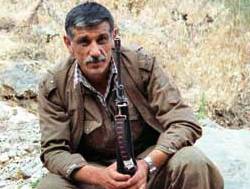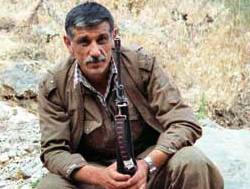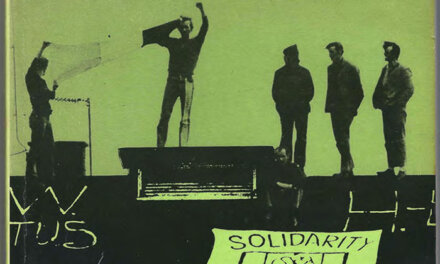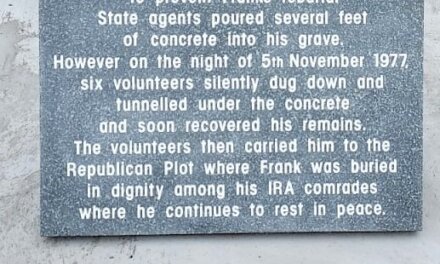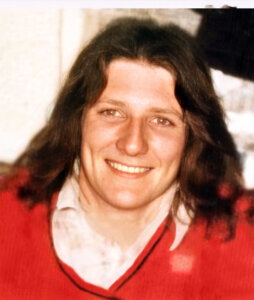An influential English-language newspaper, ‘The Kurdish Globe’ published in the Iraqi Kurdish Region, draws lessons from the 1981 hunger strike and the political development of the Irish Republican Movement after the election of Bobby Sands. “A peaceful solution to the ‘Kurdish question’ in Turkey: Lessons of the ‘Northern Ireland question’” was written by Zafer Yörük and was published on Saturday, 23 May, 2009
Finally, the Kurdish question has been declared “the number one issue of Turkey” by the highest authority of the Turkish State, President Abdullah Gül, on 9 May 2009.
Gül also stated that there were optimistic developments and that a historical opportunity for a realistic and rational solution had emerged. Gül’s historical statement followed a statement by the top name of the PKK, Murat Karayılan [pictured], in an interview with the Turkish press that the PKK was ready to give up arms as part of a reasonable peace process. If these mutual statements indicate anything more than mere expressions of goodwill, then we have every reason to expect the commencement of a “peace process” in the near future.
From South Africa to Nicaragua, Kosovo, Cyprus, East Timor, Angola and Palestine, we have been witnessing many “peace processes” around the world since the last decade of the twentieth century. A few of these have led to peaceful and rational settlements, while most of them are still work in progress, with many ups and downs, setbacks and partial steps forward. Turkey’s Kurds tend to resemble the situation in Turkey to South Africa: “Mandela had been jailed for 27 years. But he was released and elected the President of South Africa. We want a similar general amnesty in Turkey. And this amnesty should also apply to Öcalan” (Halil İrmez, DTP Şırnak Provincial Chairman in Taraf, 14 May 2009).
It goes without saying that if this analogy works, then we only have 17 years before a person, whose sole resemblance with the current president is his first name, to be transferred from his “compulsory accommodation” on Imralı Island to the presidential palace in Çankaya! However, if we are to comply with Gül’s call to reason and realism, then it should be emphasized that every analogy has its limits beyond which it becomes mere speculation.
Each of the peace processes above would be useful to study to derive analogies with the Kurdish question of Turkey, which would help the illumination of possible difficulties and problems on the road to peace. I will choose the peace process of Northern Ireland for such a comparison, for a number of reasons, most important being my personal familiarity with the situation.
There is a second and significant reason for this attempt, which is that although the Irish conflict dates back to many centuries in British history, with a number of peak points, the major and most violent conflict in recent times lasted exactly for 25 years between 1969 and 1994, until the declaration by the Provisional Irish Republican Army (IRA) a “complete cessation of violence” against the British State. Similarly, although the Kurdish conflict in Turkey can be traced back to the 19th Century, at least to the formative years of the Republic of Turkey, the recent violent conflict between the Turkish armed forces and the PKK is also about to mark its 25th anniversary.
However, there are as many dissimilarities as the similarities between the two ‘questions’. In what follows, following an outline of the chronology of the conflict and the subsequent peace process in Northern Ireland, I will clarify these similarities and differences to derive some conclusions regarding the possible trajectory of the prospective Kurdish peace process in Turkey.
The ‘Northern Ireland Question’
The roots of the conflict in Northern Ireland can be traced back to the year 1607, when English and Scottish landowners began to settle in Northern Ireland to dominate economically and politically the whole island of Ireland. These settlers were exclusively Protestant as opposed to the predominantly Catholic population of the island. They ‘baptized’ the six counties in which they settled “Ulster” and established their rule from there over the rest of the island with the military support from London. The contemporary successors of these settlers form the majority of the population in Northern Ireland and a good part of the cause of the current problems in Northern Ireland originate from this contradictory composition of population in the region.
In 1922, following the Irish independence with the declaration of Irish Free State, the ‘Ulster’ Parliament dominated by unionists decided to opt out and remain as part of the United Kingdom. Since then the 6 counties in the northeast of the island form the country of Northern Ireland.
In 1960s, a civil rights movement emerged in Northern Ireland with a perspective of cessation from Britain in favour of unification with the Republic of Ireland, and to protest the domination of the nationalist/Catholic community, and discrimination against them, by the unionist/Protestant population. This movement was violently suppressed by the police. Moreover, the loyalist paramilitary forces organized as ‘Ulster Voluntary Force’ launched a counter offensive to the Catholic neighbourhoods around the country, which led in 1969 the arrival of the British troops in Northern Ireland ‘to restore peace’. In practice, though, the British army soon became one of the combatants in the conflict, teaming up with the loyalist paramilitaries and the police to suppress the nationalist/Catholic aspirations.
The Irish Republican Army (IRA) reformed itself as the ‘Provisional IRA’ in response to this concerted aggression and announced the launch of an armed campaign to end the British backed rule in Northern Ireland. The British reaction was violent: in January 1972, British troops shot dead fourteen civil rights marchers on ‘Bloody Sunday’, which was followed by the abolition of the Northern Ireland administration and the imposition of direct rule from London.
The year 1969 marks the beginning of the “Troubles”, an undeclared war between the IRA and the nationalist/Catholic community on the one side and, British armed forces, ‘Ulster’ Police and the Protestant/loyalist paramilitaries on the other. To the British public, this violent conflict, which claimed over 3,600 lives (of a population of just over 1.5 million) and countless more injuries and bereavements, has been systematically portrayed either as ‘sectarian violence’ between communities or simply as the ‘terrorist’ activities of the IRA. In 1978, the euphoric British government refused an offer by the IRA for peace talks, hoping to eliminate the republican movement for good by military means.
By the 1980s, it looked as if the British/loyalist side was winning the war, with thousands of IRA militants captured and imprisoned, which must have encouraged the ‘Iron Lady’ Margaret Thatcher to go so far as to deprive the IRA prisoners of their political prisoner status to reduce them to ‘common criminals’. This move was countered by a wave of prison strikes, which led to the death of Bobby Sands in May 1981. Sands had been elected to the British Parliament as the Northern Ireland deputy while on hunger strike, along with his comrade Owen Carron, while two other protesting prisoners were elected to the Northern Ireland Assembly. In addition to the electoral support, there were work stoppages and large demonstrations all over Ireland in sympathy with the hunger strikers. Sands’ funeral turned into a 100,000 strong nationalist demonstration.
Sands’ death caused a major shift in British mentality regarding the ‘Irish question’. It became impossible to hold on to the official argument that the whole conflict was simply the work of ‘a bunch of terrorists’, given the democratic/electoral support to Sands by the Irish masses. Sands’ self-sacrifice also made the British public to realize that there must have been serious suffering among the Irish community, so serious as to die for. It was in this changing climate that the British government began to seek a way out of the Northern Ireland impasse. Thatcher tried to handle the situation by signing an Anglo-Irish Agreement with the Irish Prime Minister, which mainly intended to increase cooperation between London and Dublin in suppressing ‘terrorism’. As expected, this treaty was simply stillborn, and it became increasingly clear in the late 1980s and early 1990s that, in order to find any kind of ‘solution’ to the continuing conflict, the British government would have to find some way of conducting discussions with the Republican movement itself.
Sands’ death also served the understanding by the Irish republican movement of the importance of electoral process. Sinn Fein (“We Ourselves” in Irish) Party stepped forward with the famous motto, “a ballot paper in one hand and an Armalite in the other” to stand in the elections as the political representative of the republican movement. In 1983, Sinn Fein leader Gerry Adams was elected to the British Parliament. Adams immediately declared on behalf of the republican movement that he was ready to enter talks with the government representatives but instead of an invitation to the negotiation table, he would face the imposition of restrictions on his media coverage.
1980s also witnessed the change of IRA tactics. While decreasing the level of armed attacks in Northern Ireland, they carried the conflict to the sight of the British public, through a series of bombings in major English cities, including London. In 1984, Prime Minister Thatcher narrowly escaped death when an IRA bomb blast killed five in the Grand Hotel of Brighton, where British cabinet members were staying during the Conservative Party’s annual congress. The bombing campaign in mainland England targeting train stations, shopping centers, financial institutions, army barracks, etc. continued until 1994, claiming around 60 lives, including soldiers, politicians, policemen and civilians, in addition to causing colossal economic damage. The IRA called this campaign, TUAS, “Tactical Use of the Armed Struggle”, and defined its goal as forcing the British State to the negotiating table with Sinn Fein.
From ‘Troubles’ to Peace
Finally, in 1993, Conservative Prime Minister John Major declared that his cabinet was ready to facilitate negotiations between the representatives of the conflicting communities of Northern Ireland. This gesture was sufficient enough for the IRA to declare a ceasefire in 1994. British government made it clear however that a ceasefire was not enough: until a complete decommissioning of arms by the IRA, they would not engage in direct talks with Sinn Fein. Breaking this deadlock became possible only with an intervention from outside: the US envoy, Senator George Mitchell, stepped in to open lines of communication between the IRA/Sinn Fein and the British State. To demonstrate the American commitment to the peace process, President Bill Clinton invited Gerry Adams to the White House, albeit objections from the British government.
This visit, which took place in 1994, served to legitimize Sinn Fein as a fundamental part of the peace process and paved the way for the Prime Minister Tony Blair’s historical meeting in 1997 with Gerry Adams at 10 Downing Street. The immediate fruits of this meeting were the declaration of a second ceasefire by the IRA, and the subsequent admission of Sinn Fein into the “Peace Process”. The process was crowned by the announcement by the US Senator George Mitchell, who was chairing the negotiations, the signing of the “Good Friday Agreement” on 10 April 1998, the terms of which included a devolved, inclusive government, prisoner release, troop reductions, decommissioning of arms, provisions for polls on Irish reunification, and civil rights measures.
Since the Good Friday Agreement, the IRA has gone through a complete disarmament under the supervision of an “Independent International Monitoring Commission”, and the former enemies, the Democratic Unionist Party and Sinn Fein formed a regional coalition government in 2007, which was followed by a declaration by the British Army that they completely ceased their operations in Northern Ireland.
Problems of the Irish “Peace Process”
Northern Ireland Peace Process began in 1994 and it took 13 years before the achievement of a proper peace in the region. The main obstacle of the process was the position of the Protestant community, who felt that they were being “sold out” to the Irish Catholics by the British State. At the outset, their refusal of sharing the negotiating table with “IRA terrorists” was frequently expressed by Ian Paisley, a protestant priest and the leader of the Democratic Unionist Party. In 13 years, the same Paisley would agree to accept Martin McGuinness, a former IRA commander, as his Deputy First Minister of Northern Ireland.
The process did not evolve smoothly. Persuading the IRA to comply with the decommissioning of arms has been one of the major difficulties. The commencement of the peace process did not mean an immediate end of violence. While the occasional attacks and retaliations between the IRA and loyalist paramilitaries with fatalities and casualties have never completely ceased, radical splinter groups such as the Real IRA and Continuity IRA have maintained attacks on British targets in the form of bombings in England and shooting of British soldiers in Northern Ireland. The last reported incident occurred in March, when two British Army soldiers were shot dead and two more seriously injured in Northern Ireland by the Real IRA.
These setbacks, however, have not destroyed the peace process, thanks to the determination of the parties involved. The terms of agreement have been systematically applied, including the release of political prisoners, decommissioning of arms and the formation of an Assembly and regional administration in Northern Ireland. There were also important gestures by the British government, including an apology for Britain’s role in the “potato famine” of the 19th Century, and an end to referring to the region as ‘Ulster’. The name of the regional police force was changed from the Royal Ulster Constabulary to the Police Service of Northern Ireland in 2001.
The most important factor that has made the Irish peace process to advance steadily since 1994 was the commitment of the British State as a whole without any fragmentations. When the process commenced in 1994 under a Conservative government, the opposition Labour Party did not chose to ally with the grievances of the Ulster Unionists to increase their votes in the approaching elections. Similarly, the pathbreaking steps taken by the Labour government since 1997 have never been substantially opposed by the Conservative or Liberal opposition parties. Peace in Northern Ireland had obviously been agreed upon in advance by all the major components of the British establishment as a State Policy, as a precondition of the future steps.
Kurdish Peace in Turkey: Lessons of Northern Ireland
Following the above narration of the political process, a structural analysis of Northern Ireland peace process becomes possible, which would enable us to identify its main elements below, for a comparison with the prospective peace process in Turkey.
(1)Interaction of the key Political Parties: a)The main advantage of the Turkish case is that unlike the case of Northern Ireland, there is no serious fragmentation on the side of the Kurdish representation in Turkey. The Kurdish conflict in Turkey has never included a dimension of serious sectarian violence between different communities. In fact, the 25 year long Kurdish conflict has not led to the escalation of serious ethnic hostilities in the whole of Turkey, despite the sustained chauvinistic agitation by the Turkish press and media.
b)Regarding the Kurdish counterpart of the Turkish government in peace negotiations, an analogy between the DTP and Sinn Fein would not be unrealistic. DTP seems capable of obtaining a mandate to represent the Kurdish movement in Turkey as a whole, including the consent of the PKK. The position of the Turkish State so far is similar to Thatcher’s position in the 1980s, which demanded the disarmament of the IRA as a precondition for the commencement of direct talks with Sinn Fein. This position proved to be unrealistic and the British government accepted by 1994 to enter talks without this condition. Therefore, the Turkish insistence on the surrendering of PKK guerrillas prior to any talk about any solution for the “Southeast Question” needs serious revision.
c)While the unity of the Kurdish side is an advantage for the Turkish case, the fragmentation on the Turkish side constitutes the main weakness of our analogy. The President’s call for peace has been countered by the opposition parties, who have gone as far as to name such a move as “treason”. Instead of Ian Paisley, we have Deniz Baykal and Devlet Bahceli, who are involved in an identical protest to the Paisley’s that the state should not negotiate with the ‘terrorists’. It should be noted that the opposition parties in Turkey do not only express the views of their electorate but they also represent different sectors of the Turkish State. In fact, only a week before the President’s statement, in response to the questions of the necessity or not of a general amnesty, the Chief of General Staff Ilker Basbug said that ‘rehabilitation centers’ for ‘repenting terrorist’ would be sufficient for the encouragement of PKK guerrillas to disarm themselves. Moreover, Kurdish and liberal observers link the recent decision by a Court for the trial of Abdullah Gül for the corruption charges dating back 1997 to his recent statement on Kurdish question. The opposition leaders’ objections should therefore be read together with these ‘meaningful coincidences’ as a sign that Turkey’s military-bureaucratic elites still need serious work to be convinced that a Kurdish peace is in the long term interests of the Turkish state. Without this unity and determination are formed as a state policy, a peace process will be far more difficult than the case of Northern Ireland.
d)The initial Kurdish demands for the restoration of the Kurdish names of towns and villages in the region, which had been ‘baptized’ in Turkish during the recent century, and for an official apology for the killing of civilians by the state forces, need to be taken seriously. Such gestures by the State have constituted an important part of the peace process in Northern Ireland. For one thing, the British stopped referring to the region as ‘Ulster’. If the Turkish process to follow, then we should expect the Turkish authorities to stop referring to the Kurdish provinces as ‘southeast’ in near future. A major necessary state gesture is amnesty, given that the Irish peace process advanced in parallel to the early release of IRA and other paramilitary prisoners in their hundreds.
(2) Involvement of Outsiders as Brokers: We have noted that US Senator George Mitchell’s involvement was essential in the Irish peace process. The same Mitchell is in our day President Obama’s special envoy for the Middle East. In fact, Mitchell visited Turkey and held meetings with President Gül and Prime Minister Erdoğan only a few weeks prior to the President Gül’s peace statement. This ‘meaningful coincidence’ would provide careful observers with signs of the new American administration’s determination for a peaceful solution to the Kurdish question. We have therefore reasons to expect increasing US involvement in a prospective peace process in near future.
(3)Involvement of Regional Powers: Republic of Ireland has been one of the major parties of the Northern Ireland peace process. The location of the KRG in the south of Turkey’s Kurdish region and their historic links with Turkey’s Kurdish population present important similarities with the Republic of Ireland. There are at the same time important differences, including the fact that the KRG’s status is far more unstable compared to that of Ireland. In any case, the KRG should be ready to assume an important role in near future in the capacity of a mediator or as one of the participants of negotiations between Turkey’s Kurdish movement and the Turkish state.
Conclusions: to extinguish the fire
Dostoevsky used the phrase to describe the ruthless activity of radical anarchists who burned a village: “The fire is in the minds of men, not on the roofs of houses.” The outline above of the conflict and peace process in Northern Ireland and the comparative reading of it with the Kurdish conflict in Turkey may be capable of presenting some useful lessons for the prospective peace process. In our day, the British government, the Republican movement and the protestant/loyalists of Northern Ireland are all in positions to interact with each other, which were impossible to imagine a decade ago. What each of these parties had to do through this peace process was probably “to get rid of the fire on their minds”. Dostoevsky’s description is probably the most valuable lesson that had to be learnt from human experience, before any attempt to extinguish the fire on the roofs of our houses.

